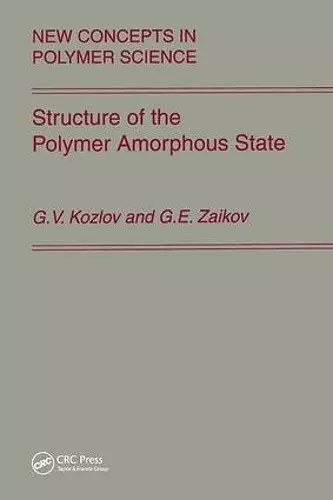Structure of the Polymer Amorphous State
Gennady Zaikov author Kozlov author
Format:Hardback
Publisher:Brill
Published:1st Feb '04
Should be back in stock very soon
This hardback is available in another edition too:
- Paperback£61.99(9780367446581)

The basic problem of polymer physics is obtaining `structure-properties’ correlations for their future application for practical purposes. However, these cannot be obtained without the development of a quantitative model of the polymer structure. This problem has been actively investigated during the last 45 years, which resulted in obtaining a great amount of experimental (mostly indirect) proofs of existence of the local order in the polymer amorphous state. Now, the time has come for creating a structural model of polymer basing based on the local order ideas. The cluster model, as presented in this monograph, of the polymer amorphous state structure represents the realization of such attempts. The development of this cluster model is based on well-known experimental observation: the behavior of glassy polymers in the area of stimulated high-elasticity plateau is described in the framework of rubber elasticity concepts. This gives an opportunity to present the local order (cluster) zone as a multifunctional entanglement of the physical network consisting of several collinear closely packed segments of different macromolecules (the amorphous analogue of crystallite with extended chains) and surrounded by a packless matrix. An independent method for assessing local order zone fraction in the structure has been elaborated. Segment length in the cluster equals the length of the chain statistical segment that gives a correlation between molecular and structural parameters of the polymer. Application of the cluster model allowed description and obtaining of analytical `structure-properties’ correlations for many processes proceeding in polymers: elasticity, yielding, degradation, transport, some thermodynamic processes, structural relaxation, plasticization, structural stabilization at thermo-oxidative degradation, etc. The relation between the cluster model and some modern physical concepts, for instance fractal analysis, fluctuation free volume kinetic theory, percolation theory, irreversible colloidal aggregation models, are outlined. A separate chapter is devoted to the features of formation and control of the relative part of local order zones in non-crystalline domains of semi-crystalline polymers and their connection to the structure of crystallites.
ISBN: 9789067644013
Dimensions: unknown
Weight: 887g
484 pages